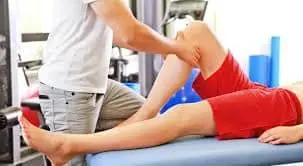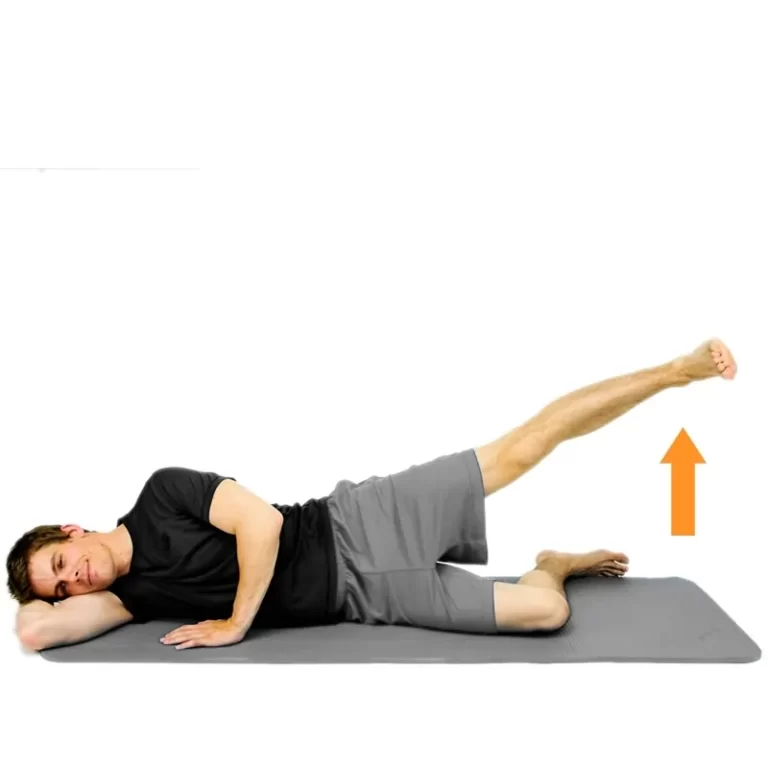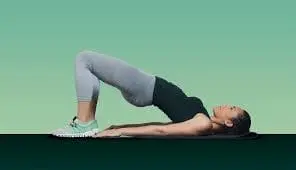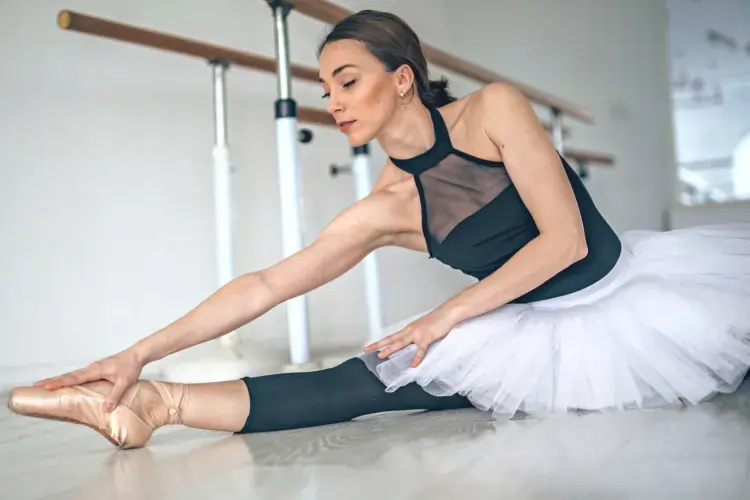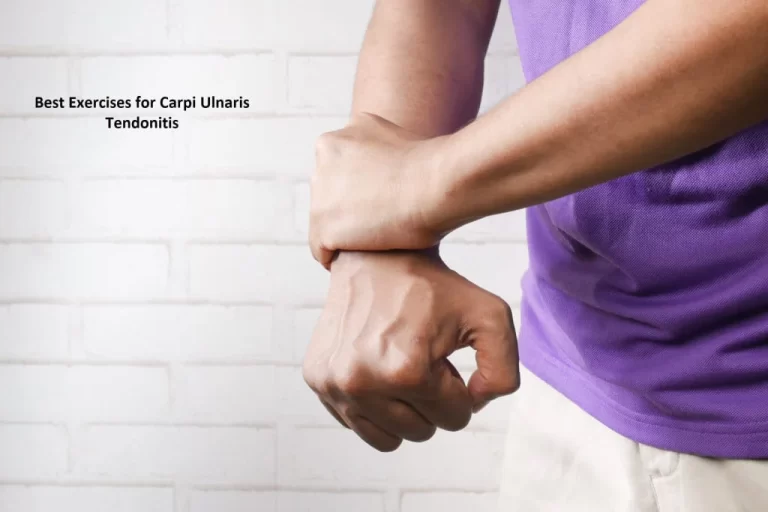14 Best Exercises For Patellar Dislocation
Patellar dislocation occurs when the patella slips out of its position, mainly due to trauma or muscle imbalance. Rehabilitation exercises play a crucial role in restoring stability, strengthening surrounding muscles, and preventing future dislocations.
The best exercises focus on improving quadriceps strength, especially the vastus medialis oblique (VMO), enhancing hip and core stability, and gently increasing knee mobility.
Introduction:
Exercises may help in the management of dislocated patellas. A disorder known as patella dislocation occurs when the patella, or knee cap, moves out of its natural position, resulting in knee joint pain and instability.
An important part of the recovery process for patella dislocations is exercise. Exercises for patellar dislocation can improve the mobility and stability of the joint, develop the muscles surrounding the knee joint, and reduce the likelihood of further dislocations.
Trauma, sudden twisting motions, or birth defects can all cause this. The healing phase after a patellar dislocation includes lowering inflammation, regaining range of motion, and strengthening the muscles that support the knee, particularly the quadriceps and hip stabilising factors.
Causes:
Prevention, treatment, and lowering the chance of recurrence all depend on an understanding of the underlying reasons for patellar dislocation.
Direct Injury
- The patella may become dislocated if the knee is struck, particularly from the side.
- Prevalent in contact sports such as martial arts, rugby, and football.
Unexpected Twisting or Turning Motions
- The femur and tibia may twist against one another if the foot is planted unexpectedly, which would cause the kneecap to become misaligned.
- Commonly observed in sports like basketball, skiing, and soccer.
A higher Q-angle
- The angle created between the hip and the knee is known as the Q-angle.
- Instability gets worse by a greater lateral force on the patella caused by a bigger Q-angle, which is typical in females.
Weak Muscle of Vastus Medialis Oblique (VMO)
- This weakness permits the patella to move laterally, particularly when the knee is extended.
Chronic or Recurrent Instability
- Future dislocations are more likely when the ligaments and retinaculum holding the patella in place are stretched or damaged by an earlier dislocation.
Injury to the Medial Patellofemoral Ligament (MPFL)
- The main barrier preventing lateral patellar movement is the MPFL.
- Chronic instability may arise from damage to this ligament sustained following a dislocation.
Congenital patellar dislocation
- Patella dislocation at birth that cannot be manually realigned is a rare problem.
- Frequently connected to further developmental defects.
Family Background
- Patellar instability may be inherited because of skeletal or connective tissue characteristics.
Unbalanced Muscles
- When the lateral quadriceps muscles (such as the vastus lateralis) dominate the medial VMO, the patella experiences lateral strain.
Weak Core and Hip Strength
- Valgus knee collapse, which places lateral stress on the patella, can be caused by weakness in the hip abductors and external rotators.
Trochlear dysplasia, or shallow trochlear groove
- This groove offers less stability and raises the possibility of dislocation if it is shallow or deformed.
Signs and symptoms:
Comprehending the symptoms and indicators of patellar dislocation is essential for early identification, proper management, and avoidance of complications.
A sudden, sharp knee pain
- Usually restricted to the front or outside of the knee, serious, acute pain is experienced at the time of dislocation.
An obvious knee deformity
- Frequently observed laterally (towards the outside of the knee), the patella may be clearly out of position.
- It can occasionally show up as a visible bump on the outside of the knee.
Having trouble moving or straightening the knee
- It might seem as though the knee is locked and cannot fully bend or straighten.
Patella-related tenderness
- Due to injuries in the medial patellofemoral ligament, the medial side of the knee might occasionally feel painful or sore.
- There may be apparent bruises as well.
Unstable or a “slipping” sensation in the knee
- Particularly while rotating or making sudden direction changes, patients frequently feel as though their knee may give out.
- Either persistent mechanical instability or psychological factors may be to blame.
Weakness and Atrophy of Muscles
- Patellar stability may be reduced as a result of the quadriceps’ gradual weakening, particularly in the vastus medialis oblique (VMO).
- If not recovered, visual thinning or decreased muscle tone may develop.
Restricted Motion
- Stiffness or reduced knee range of motion can result from chronic instability and scar tissue.
Patellar instability or subluxation regularly
- The kneecap partially slides out of position (subluxes) but then returns on its own.
- Recurring situations in which the kneecap subluxes, or partially falls out of position, but then returns on its own.
- Usually happens while you’re sprinting, jumping, or twisting.
Quick Swelling
- It usually takes minutes to hours for swelling to appear.
- Caused by inflammation of the tissue or hemarthrosis, or bleeding within the joint.
Exercise’s advantages:
Restoring stability, function, and strength to the knee with an organized exercise program is essential for recovering from a patellar dislocation. Ignoring the injury and waiting for it to heal naturally is not enough. Exercises promote long-term joint health by preventing recurrence, improving movement mechanics, and helping in joint rehabilitation.
The following provides an in-depth review of the advantages and benefits of performing particular workouts following a patellar dislocation.
Increases Stabilizing Muscle Strength
- To bring the patella inward and maintain its center in the trochlear groove, exercises focus on important muscles such as the quadriceps, particularly the vastus medialis oblique (VMO).
- Strengthening the external rotators and hip abductors improves posture by lowering valgus, or inward knee collapse.
Improves Tendon and Ligament Support
- The medial patellofemoral ligament (MPFL) and other soft tissues that maintain the patella are supported by targeted strengthening and neuromuscular training.
Minimizes Prolonged Anterior Knee Pain
- Exercises for stretching and strengthening the patellofemoral joint reduce pressure, which lessens pain, particularly when moving or doing activities.
Reduces Inflammation and Swelling
- Reduced joint stiffness and improved circulation are two benefits of light, regulated movement.
Improves Gait and Posture Mechanics
- Improves bad standing and walking habits that can have arisen following an accident.
Postpones or Avoids Degenerative Alterations
- Future patellofemoral arthritis risk is decreased by strong, stable knees that lessen aberrant wear on joint surfaces.
Encourages Joint Health
- As the body matures and during dynamic activities, the knee is protected by functional strength and stability.
Keeps Joints From Being Stiff
- Early mobility activities that encourage the circulation of synovial fluid and avoid post-injury stiffness include stationary cycling and heel slides.
Allows for Complete Knee Extension and Flexion
- For normal function and gait, a complete range of motion must be restored.
- Exercises promote flexibility and stretch tense tissues.
Lowers the Chance of Repeated Dislocation
- Movement patterns that are often incorrect in people with dislocations, such as hip-knee-foot alignment, foot mechanics, and knee tracking, are improved by exercises.
Restores Self-Belief and Lessens Movement Fear
- Patients may resume walking, jogging, or sports without hesitation or fear of dislocation thanks to controlled therapy, which increases trust in the affected knee.
Gets Ready to Resume Daily and Sports Activities
- Functional exercises that resemble real-life motions and sports demands, such as lunges, squats, and step-ups, are a part of an effective rehabilitation program.
It is important to consider the following safety precautions before starting an exercise program:
Before starting any health program, it’s crucial to think about a few safety precautions and maximise the advantages. Consult your physician or physical therapist to determine which exercises are most suited to your specific issue.
When your body is uncomfortable, it’s important to pay attention to what it needs and not push yourself. A common side effect of exercise is pain, but chronic or severe pain may be a sign of overwork. Increase the difficulty of your exercises by starting with low-impact ones until you can handle more pain.
Proper form and posture can help prevent repetitive injuries. If you are unsure about how to begin exercising correctly, speak with your doctor. To get your muscles and joints ready for an exercise session, warm them up before you start.
Exercises For Patellar Dislocation:
Heel Slides
- Start by resting in a supine position on the bed.
- The affected leg should be slid as near to the buttocks as possible.
- Hold this position for a few seconds.
- Then return to your neutral position.
- Then relax.
- Repeat these exercises 5 to 10 times.
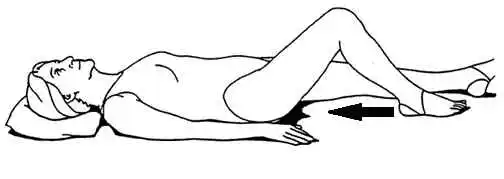
Quad Sets
- Your legs should be spread out in front of you as you sit.
- Put a little piece of the rolled towel under your knee.
- With the second foot just slightly to the side, pull the first foot in towards you.
- Pressing your leg down firmly will cause your thigh muscles to tense.
- Hold this position for a few seconds.
- Then return to your neutral position.
- Then relax.
- Repeat these exercises 5 to 10 times.
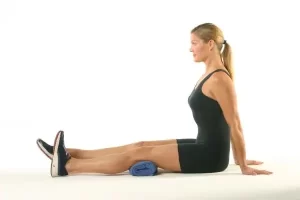
Straight Leg Raises
- Begin by lying on your back.
- One leg straight out on the ground.
- Then bend one knee.
- Next, elevate your one leg.
- Hold this position for a few seconds.
- Then return to your neutral position.
- Then relax.
- Repeat these exercises 5 to 10 times.
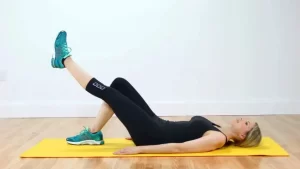
Lateral band walks
- Start by bending your knees, flexing your hips, and maintaining a straight gaze.
- Just above your knees, wrap a band over your legs.
- Get into an athletic posture by squatting down and moving to the left.
- Continue moving slowly to the left, then switch to the right side and repeat.
- Then return to your neutral position.
- Then relax.
- Repeat these exercises 5 to 10 times.
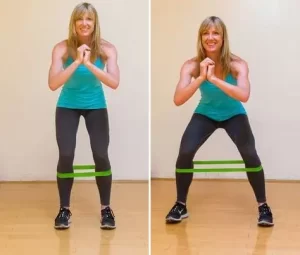
Mini Squats
- To begin, place your feet shoulder-width apart.
- In the same way that you would sit down, bow your knees.
- Pause one-third of the way down and raise yourself back up to standing, tensing your thigh muscles as you do so.
- Focus on maintaining proper posture by pressing through your heels and maintaining an upright back.
- Avoid having your knees collapse in on one another; instead, move them straight forward toward your toes.
- Then return to your neutral position.
- Then relax.
- Repeat these exercises 5 to 10 times.
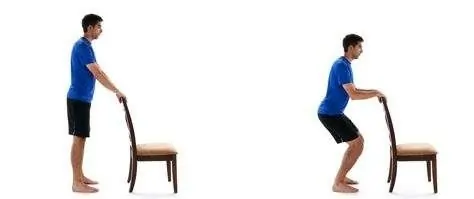
Clamshells
To do the Clamshell Exercise:
- You lie on your side to begin.
- While resting on your left side, flex your elbow.
- Next, support your head with your left hand.
- Position your right foot and leg on top of your left, and bend your knees to a 45-degree angle.
- For balance, place your right hand on your hip or lightly on the floor in front of you.
- Next, gradually lift your right knee toward the sky while keeping your feet close to the ground.
- Hold this position for a few seconds.
- Then return to your neutral position.
- Then relax.
- Repeat these exercises 5 to 10 times.
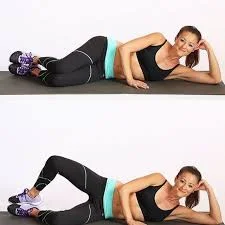
Standing Hamstring Curls
- Begin by standing in a comfortable position.
- You should space your feet hip-width apart.
- Extend your knee, elevate one foot, and lift your heel toward the sky.
- Maintaining a straight upper body and forward-pointing legs.
- Hold this position for a few seconds.
- Then return to your neutral position.
- Then relax.
- Repeat these exercises 5 to 10 times.
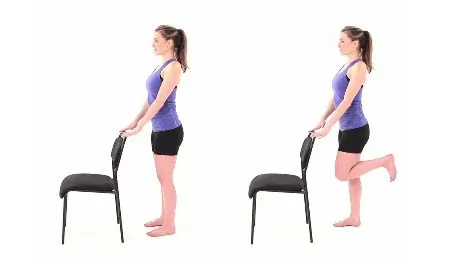
Wall sit
- Place your back against a sturdy wall.
- Step your feet out in front of you while maintaining your back against the wall.
- Let your back glide down the wall while bending your knees.
- If you’re just getting started, consider taking a single step.
- Take two to three steps to sit down more deeply, but avoid letting your knees go beyond your toes.
- Hold this position for a few seconds.
- Then return to your neutral position.
- Then relax.
- Repeat these exercises 5 to 10 times.
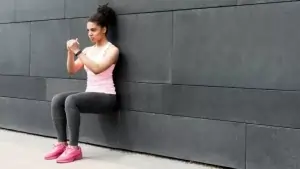
Lateral step up
- With the foot next to the step on top of it and the knee bent, stand sideways next to a step.
- With your other foot planted on the ground, your knee should be completely straight.
- You should tilt your body forward a little and bend at the hips.
- Lift your other foot off the ground and push with the foot on the step while keeping your knee straight.
- As you maintain this posture, concentrate on keeping your other foot hanging in the air as you balance on your standing foot.
- Then return to your neutral position.
- Then relax.
- Repeat these exercises 5 to 10 times.
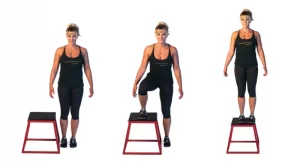
Prone leg raise
- Lay on your face on the ground.
- Carefully elevate one leg while keeping your knees straight.
- Hold this position for a few seconds.
- After that, carefully return your leg to the floor.
- Don’t turn your pelvis or back when you raise your leg.
- Then return to your neutral position.
- Then relax.
- Repeat these exercises 5 to 10 times.
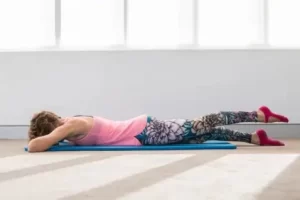
Knee extension
- Start with the seating position on the chair.
- Extend one leg gently in front of you, making sure your knee is as straight as possible.
- As you extend your leg, keep your foot flexed (toes pointing up) and engage your quadriceps.
- Hold this position for a few seconds.
- Avoid allowing the leg drop to happen too soon and instead maintain it regulated and gradual manner so you can maximize the advantages.
- Then return to your neutral position.
- Then relax.
- Repeat these exercises 5 to 10 times.
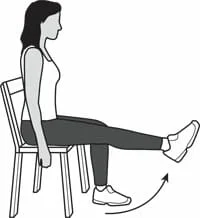
Hip abduction
- Lay on your side to begin.
- Flex your lower leg while raising your affected upper leg.
- Raise your upper leg to a 45° angle while you’re flat on your back.
- Hold this position for a few seconds.
- Then return to your neutral position.
- Then relax.
- Repeat these exercises 5 to 10 times.
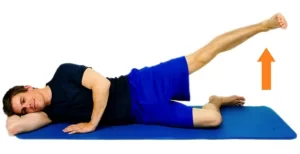
Standing calf stretch
- Begin by standing firmly on the floor.
- Put your hands on the wall and take a step back as far as feels comfortable.
- Make sure your heels are flat, your knees are slightly bending, and your toes are pointing front.
- Hold the stretch for a few seconds.
- Your back leg should feel stretched.
- Then return to your neutral position.
- Then relax.
- Repeat these exercises 5 to 10 times.
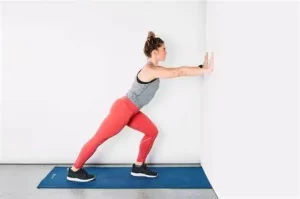
Single-leg balance
- Get started standing on the ground.
- Your arms should remain by your sides.
- One leg should be flexed at the knee to raise your foot back.
- Get to your feet using the other foot for balance.
- Hold this position for a few seconds.
- Lower the raised foot.
- Then return to your neutral position.
- Then relax.
- Repeat these exercises 5 to 10 times.
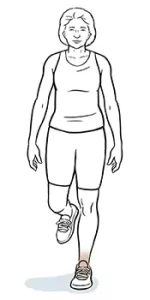
What precautions should be taken when exercising?
To guarantee proper healing, avoid re-injury, and regain strength and mobility, exercise following a patellar dislocation (kneecap dislocation) requires careful planning and particular precautions.
The following covers specific safety measures and things to think about when doing patellar dislocation exercises:
Receive a medical approval.
- Before beginning any workout, always get advice from a physical therapist or orthopedic physician.
- Make sure the dislocation is completely minimized, and evaluate any bone, cartilage, or ligament damage.
The Proper Method for Cooling Down and Warming Up
- Make sure to always warm up with low-impact activities like walking or cycling for five to ten minutes.
- Stretch gently to relax.
Make Slow Progress
- Begin with low-impact, non-weight-bearing exercises (e.g., quad sets, leg lifts).
- Make the transition to weight-bearing and functional exercises (mini squats, step-ups, etc.) gradually.
- Once cleared, resume sports or leaping.
Pay attention to any pain or swelling.
- Exercises that produce severe or worsening pain should be stopped.
- While little pain is common, pain during or after an activity might indicate that you’re exerting yourself excessively.
- To lessen inflammation after exercise, use ice.
Pay Attention to Proper Muscle Activation
- Focus on important muscle groups:
- Particularly, the Vastus Medialis Oblique (VMO) quadriceps
- To improve hip control, use your glutes.
- Hamstrings (to stabilize the knee)
The lateral quad muscles can pull the kneecap outward; therefore, try not to overuse them.
Refrain from High-Risk Activities
Avoid doing exercises that require:
- Deep lunges or squats
- Knee twisting or rotating
- Running or jumping
- On the kneecap, kneeling directly
Damage to healing buildings or re-dislocation may become more likely as a result of these moves.
Maintain Knee Stability
- During the early stages of rehabilitation or as directed by your therapist, use a brace, tape, or patellar strap.
- During activity, these helpers support proper patellar position.
Employ the Right Method
- When performing steps or squats, try to prevent valgus, or the collapse of the knee inward.
- Regulate the movement’s depth and pace.
Get Warm and Get Cool
- Spend five to ten minutes warming up with gentle exercise, such as cycling.
- Stretch gently at the end of each session, paying particular attention to the quadriceps, hamstrings, calves, and IT band.
Pay Attention to Your Surface and Footwear
- Put on shoes with a strong grip and support.
- Work out on a level, non-slip surface.
- In the beginning, stay away from stairs, slopes, and uneven ground.
When did you stop exercising?
Sudden or Severe Knee Pain
- Sharp, stabbing, or growing pain indicates that you are overstressing the joint, although moderate pain is ok.
Complications or Inflammation
- During or after the activity, if the knee swells, stop and apply ice.
- Chronic or worsening swelling might be a sign of cartilage or soft tissue injury or irritation.
Catching or Locking
- An internal joint injury, such as a torn meniscus or a cartilage issue, may be indicated if the knee locks up or becomes stuck when moving.
Reduced Range of Motion
- Something could be amiss if you find that you are unable to fully bend or straighten your knee as you once could.
New Grinding or Clicking
- While occasional moderate clicking is typical, excessive or painful grinding noises during movement might indicate patellar maltracking or cartilage damage.
Fatigued or Unable to Maintain Control
- Stop and rest if your leg muscles are too tired to keep your technique or posture correct. Maintaining this posture raises the possibility of injury and bad form.
Feeling unstable or “giving way”
- Stop right away if you feel like your knee is about to buckle, shift, or dislocate again.
- This might indicate that your kneecap-supporting muscles are weak or that you’re performing workouts that aren’t suitable for your recuperation stage.
What workouts should you avoid when you have a patellar dislocation?
Avoiding certain workouts is essential throughout the healing process of a patellar dislocation to minimize kneecap stress, prevent re-injury, and promote proper healing.
Complete Squats and Deep Knee Bends
- Squats with a heavy barbell
- A pistol squat
- Full-depth squat
- Deep flexion can put stress on healing tissues and raise strain beneath the kneecap.
Plyometric exercises or jumping
- Burpees, box jumps, jump squats, and tuck jumps are a few examples.
- The risk of re-dislocation is increased by high-impact landings and forceful knee movements.
Turning or Twisting Motions
- Tennis, dance, soccer routines, and basketball exercises
- Unexpected changes in direction can cause the patella to become dislocated.
Extensions of the Open Chain Knee with High Resistance
- May worsen instability or maltracking and increase the strain load on the kneecap.
- Heavy-duty, seated leg extension machine
Lunges, particularly forward or deep lunges
- Particularly weighted or uncontrolled lunges
- Can increase anterior knee stress and put the knee in an unstable posture.
Running (Initially in Rehab)
- Particularly when sprinting or running uphill
- Stress on the healing ligaments might result from repeated high-impact on the joint.
Poor Form for Stair Climbing or Step-Ups
- Particularly while on steep steps or unsupervised
- If muscles are weak or the position is unsuitable, the patellofemoral joint may be strained.
Summary:
Direct trauma, structural anomalies, and biomechanical inefficiencies are some of the reasons for patellar dislocation, which is a complicated medical condition. In every situation, understanding the primary reason is crucial to creating a focused treatment and rehabilitation strategy. An organized rehabilitation program and an accurate diagnosis can significantly improve results and avoid recurrence, no matter whether the dislocation was an isolated incident or a component of a pattern of instability.
Exercises for rehabilitation are essential for both healing from and avoiding a patellar dislocation. Maintaining the proper position of the patella is facilitated by strengthening the muscles surrounding the knee, particularly the quadriceps, hamstrings, and hip stabilizers. The majority of individuals may restore full function and resume their regular activities with the right support and effort.
Together with proper posture and movement awareness, you can help reduce pain while improving your general health through incorporating these exercises into your everyday routine. A qualified physical therapist should always be consulted before beginning a new exercise program, especially if you have a specific injury or condition.
FAQ:
A patellar dislocation: what is it?
When the patella, or kneecap, shifts from its natural position, generally to the outside of the knee, it is called a patellar dislocation. Trauma, sporting injuries, or anatomical genetic characteristics are frequently the causes.
What makes post-patellar dislocation exercises important?
Exercises for rehabilitation help in:
Restoring knee strength and stability
Stop the relocation
Improve your range of motion
Increase your self-assurance when moving
After suffering a patellar dislocation, when should I begin exercising?
Rehab activities should only be started as directed by your physician or physical therapist. Progressive strengthening and mild mobility are frequently followed by initial immobilization and rest.
Can I perform these workouts at home?
Many rehabilitation activities are safe to perform at home, however, it’s crucial to:
Take professional advice. Make sure you use the right technique. Prevent pain when moving.
How frequently must I perform the exercises?
Depending on the stage of your recovery, you might need to perform exercises:
In the beginning, two to three times a day (soft stretches, isometrics)
In later phases, three to five times a week (functional training, strengthening)
Your healing progress will determine how your physical therapist modifies this.
What is the average recovery time?
Although recovery times vary, most people get back to their regular activities in: For first-time dislocations, rehabilitation takes 6–12 weeks; if surgery is necessary, it takes 3–6 months or more.
When I work out, should I wear a brace?
In certain situations, it could be advised to use a patellar stabilizer or knee brace when exercising. For individualized guidance, speak with a physical therapist.
Can physical activity stop dislocations in the future?
Indeed, recurrence risk is decreased by strengthening and stabilizing activities, particularly by improving:
Muscle balance
Knee alignment
Joint control
Which factors increase the chance of patella dislocation?
Patella alta (high riding patella), trochlear dysplasia or lateral femoral condyle hypoplasia, and severe lateral patella tilt are anatomy features that increase the risk of dislocation. The patella is particularly prone to instability and dislocation when the normal architecture of the patellorfemoral joint is changed.
Is the dislocation of the patella permanent?
Adults with permanent dislocation of the patella have a rare disorder that presents as total irreducible lateral dislocation of the patella, along with secondary abnormalities, including leg-length discrepancy and valgus deformity.
References:
- CB Physical Therapy: Patella Dislocation Exercises
- Gym (2020). acute dislocation of the patella. Exercises for Acute Patella Dislocation https://www.uhcw.nhs.uk/download/clientfiles/files/Practices.pdf
- On April 4, 2024, Llewellyn, J. Is your kneecap loose? Try these seven exercises. The ability to brace. Exercises for tracking the patellar muscles: https://www.braceability.com/blogs/articles/7
- Musculoskeletal Physiotherapy Service, NHS Fife. (2020). Program for Home-Based Rehabilitation for Patella Dislocation. Patella-dislocation-English.pdf https://www.nhsfife.org/media/7yv10pbb
- Sports Medicine, Gundersen Health System, n.d. Gundersen Health System’s Physical Therapy Program for Peltofemoral Dislocation Rehabilitation. Sports-Medicine-Protocol-Patellofemoral-Dislocation-Accelerated.pdf: https://www.gundersenhealth.org/sites/default/files/2022-06
- Orthopedic, R. (April 28, 2022). Knee Pain: The Best 5 Non-Operative Patellar Dislocation Exercises. The organization is called RIO Orthopedic. The Top 5 Knee Pain Exercises for a Non-Operative Patellar Dislocation: https://rioortho.com/knee-injuries/
- [P]rehab Archives: Patellar Dislocation (n.d.). [P] Rehabilitation. There is a video tag for patellar dislocation at https://library.theprehabguys.com/

